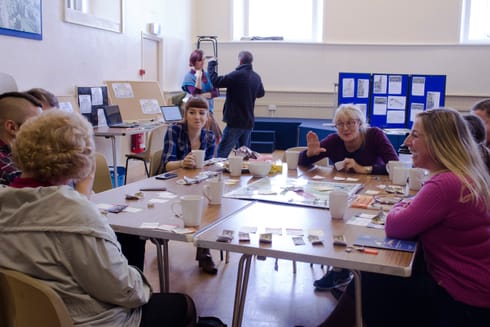
Most documentaries have an eye to changing something about the world. They're not just films made without purpose, they're films about the world we live in and the stories we tell ourselves. In the Life Story Work project, Rebecca Nicholson, James Hodge and I worked with a charity that works with care-experienced young people to ask: can we use digital media to change the stories that are being told about care-experienced young people? Can we make a research process which is a meaningful experience, on its own terms, for the people involved in it?
In many ways this project was a development of the Critical UX Design Research project, developing its ideas around meaningful participation in different kinds of design. It also took inspiration from Rebecca Nicholson's Gig Academy project, a curriculum and pedagogical approach to teaching GCSE-level arts by building the skills to put on a real-life event. Blending these together, we were interested in both understanding whether an approach like Gig Academy could work in an informal learning setting (such as youth work) and whether making something was a useful approach to tackling the dearth of agency and power in traditional design methods.
In this project I also picked back up on a thread from Exploring Digital Peer Support around the importance of reflection and building reflexivity into design processes. We explored how building practical filmmaking skills and reflexivity might help people to process difficult life experiences whilst also building skills which they could choose to develop further after the project. To do this, we developed a critical pedagogical approach inspired by Paulo Freire to help participants finding and understanding the issues that matter to them, whilst also articulating and critiquing the current structural issues they experience.
We found that the process helped people to build practical skills that they might previously have been reluctant to try. Everyone involved reported an increase in their practical abilities, and this was partly ascribed to how the process was structured. One young person told us that making the film ‘made [her] confident, knowing [she] can do things’. The youth workers involved felt that the process was much better than regular filmmaking processes that they had been through before, as previously they 'didn’t like the images or the tone’, but with this film they found that the ‘tone of this film... developed as we were going’, which enabled them to take a greater role in its construction.
A snippet of the the film can be viewed here. (resources forthcoming).

